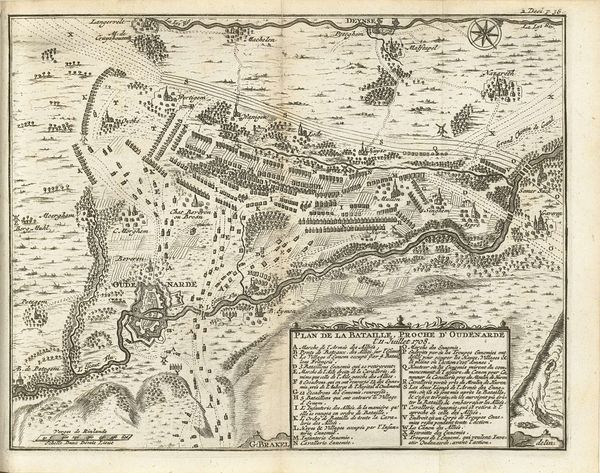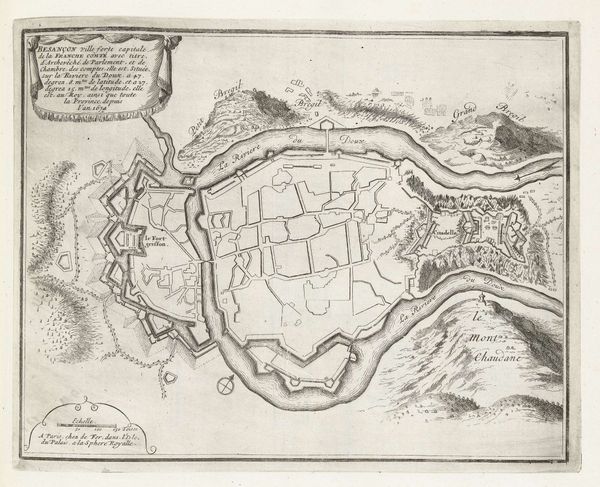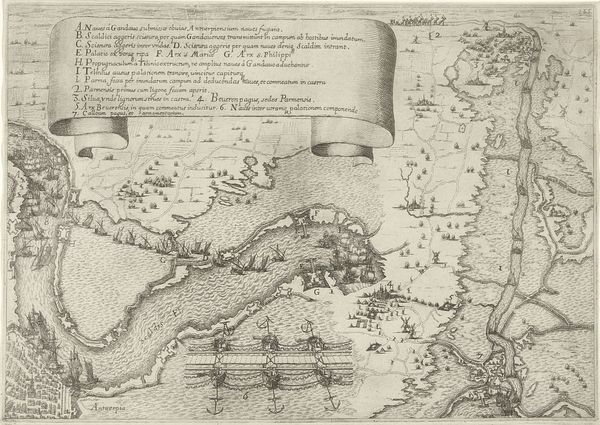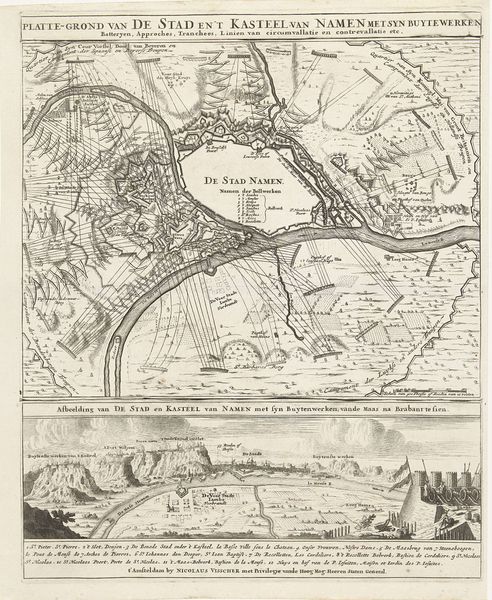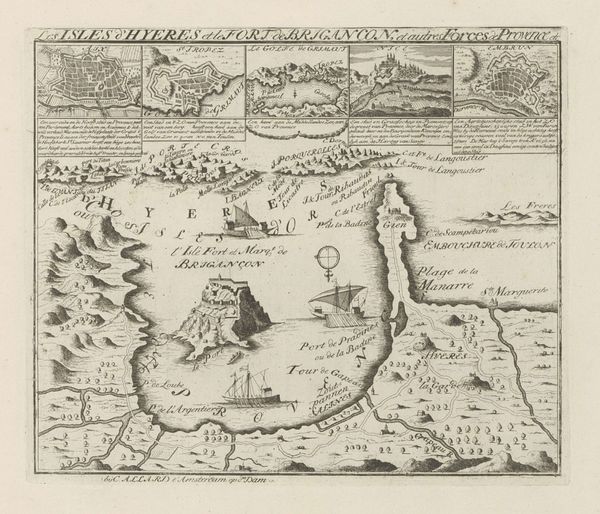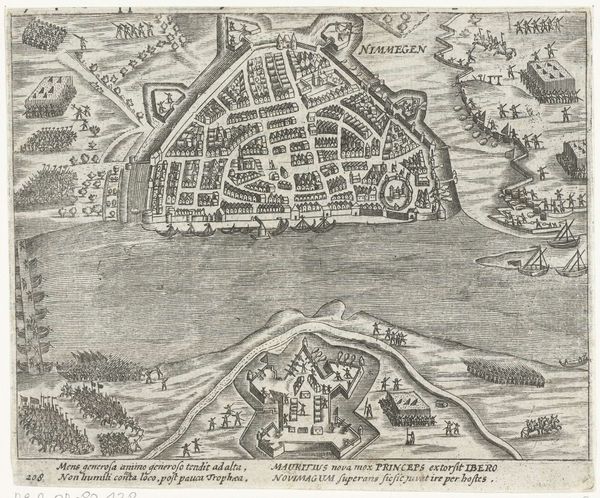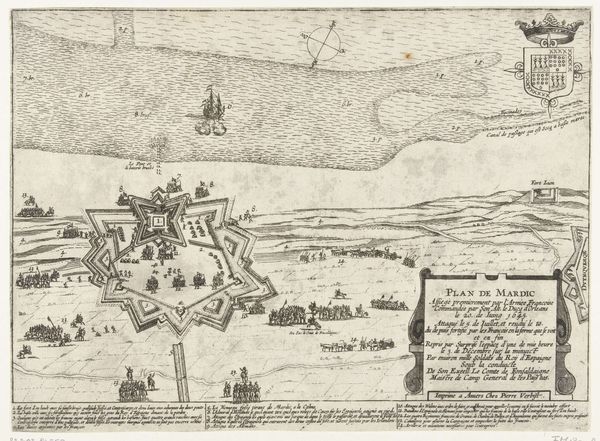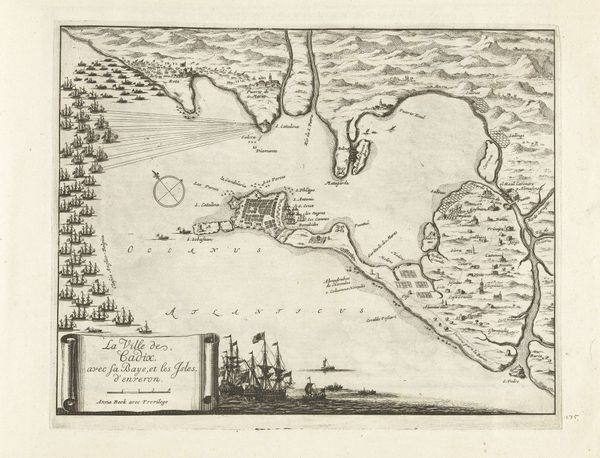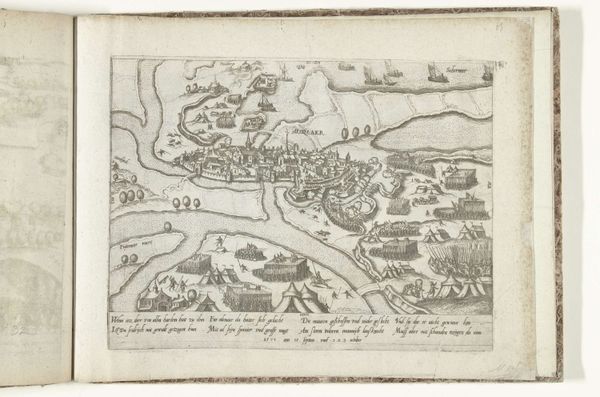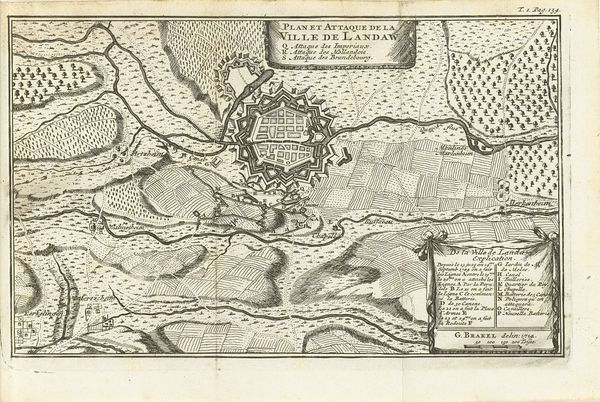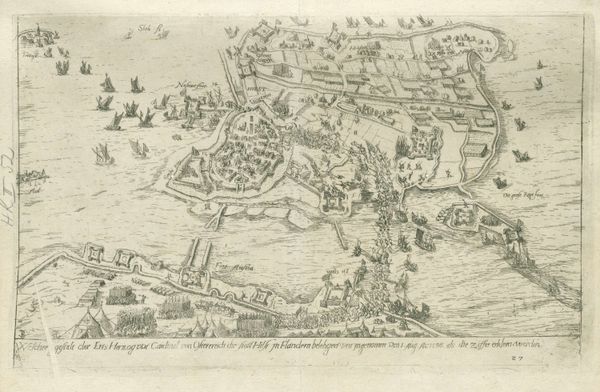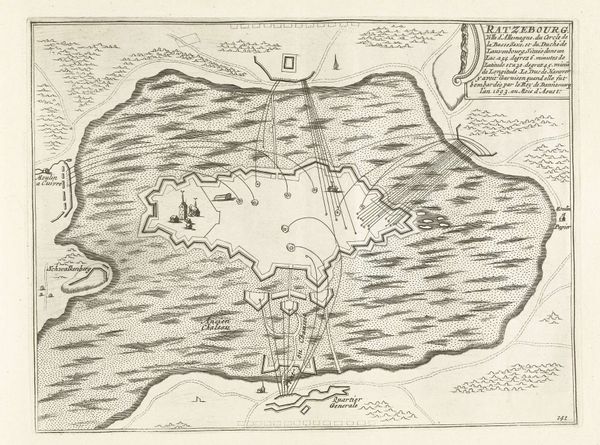
graphic-art, print, engraving
#
graphic-art
#
baroque
# print
#
cityscape
#
engraving
Dimensions: height 147 mm, width 168 mm
Copyright: Rijks Museum: Open Domain
Matthijs Pool made this print of Nijmegen between 1700 and 1710 using an engraving technique. Lines are incised into a metal plate, which is then inked and printed. The choice of material—metal—was crucial, as it allowed for detailed and precise lines, perfect for representing the city's architecture and fortifications. Notice how the lines vary in thickness and density to create depth and texture, giving a sense of the city's layout and the surrounding landscape. Engraving was a skilled craft, demanding years of training to master. The process was labor-intensive, with each line carefully cut by hand. In the 18th century, prints like these were essential for disseminating information about cities and military strategies. They also functioned as status symbols, reflecting the power and technological advancements of the time. Ultimately, this print is not just a map; it’s a product of skilled labor, technological innovation, and social context, all captured through the materiality of metal and ink.
Comments
No comments
Be the first to comment and join the conversation on the ultimate creative platform.

